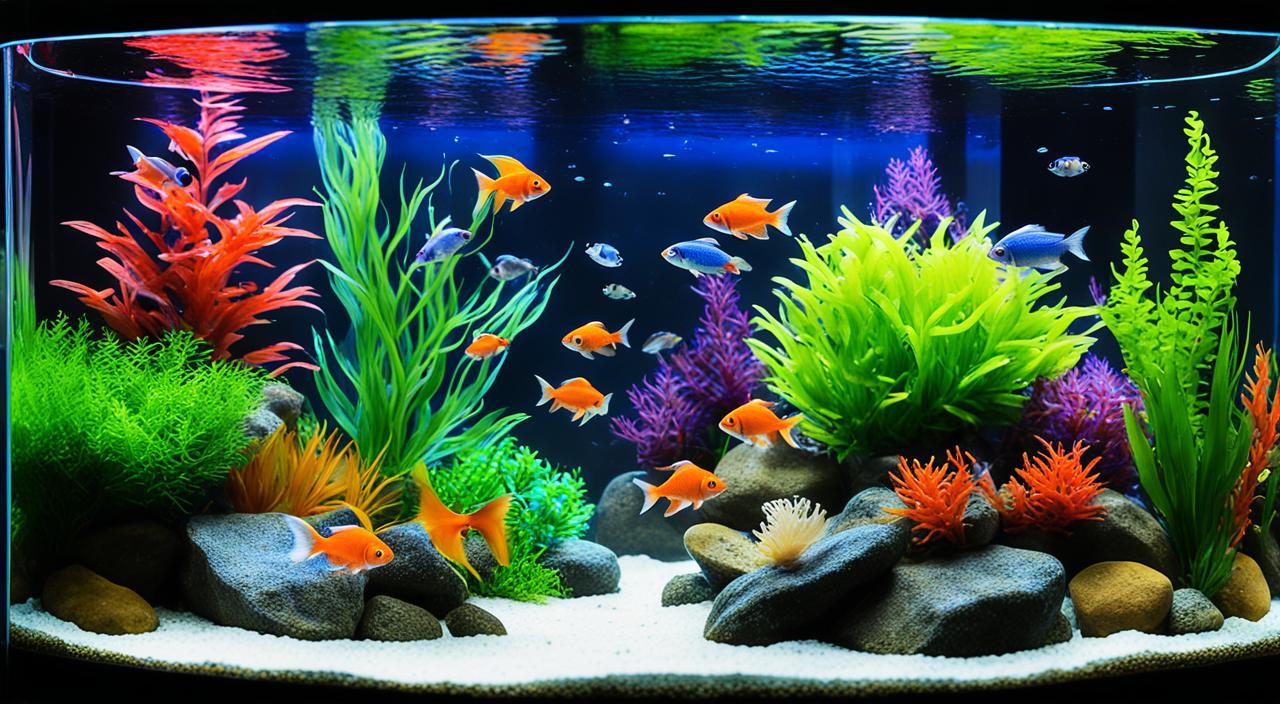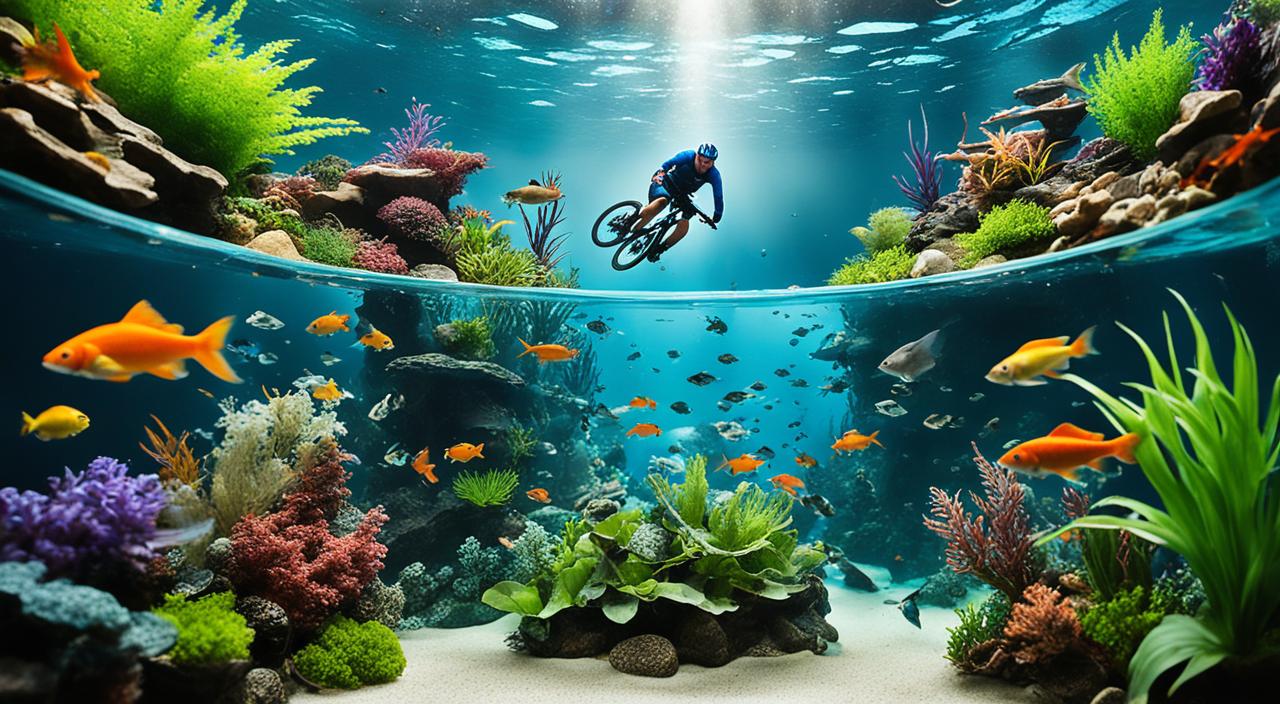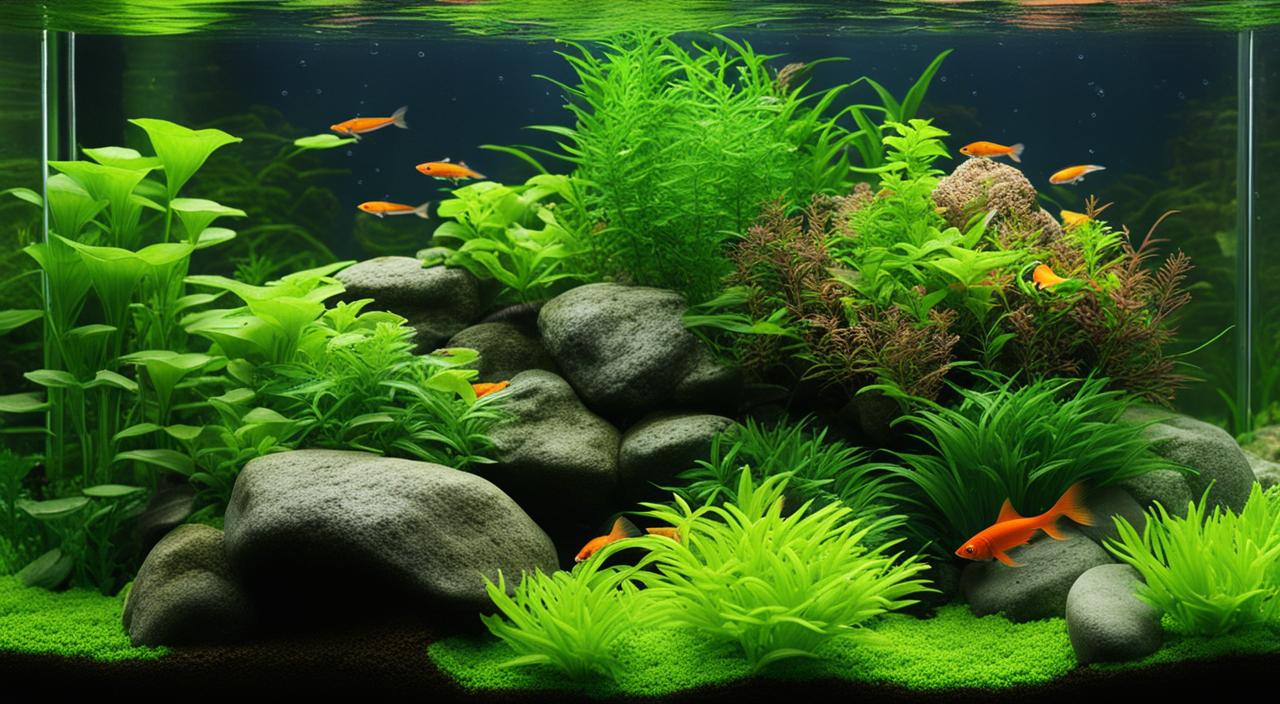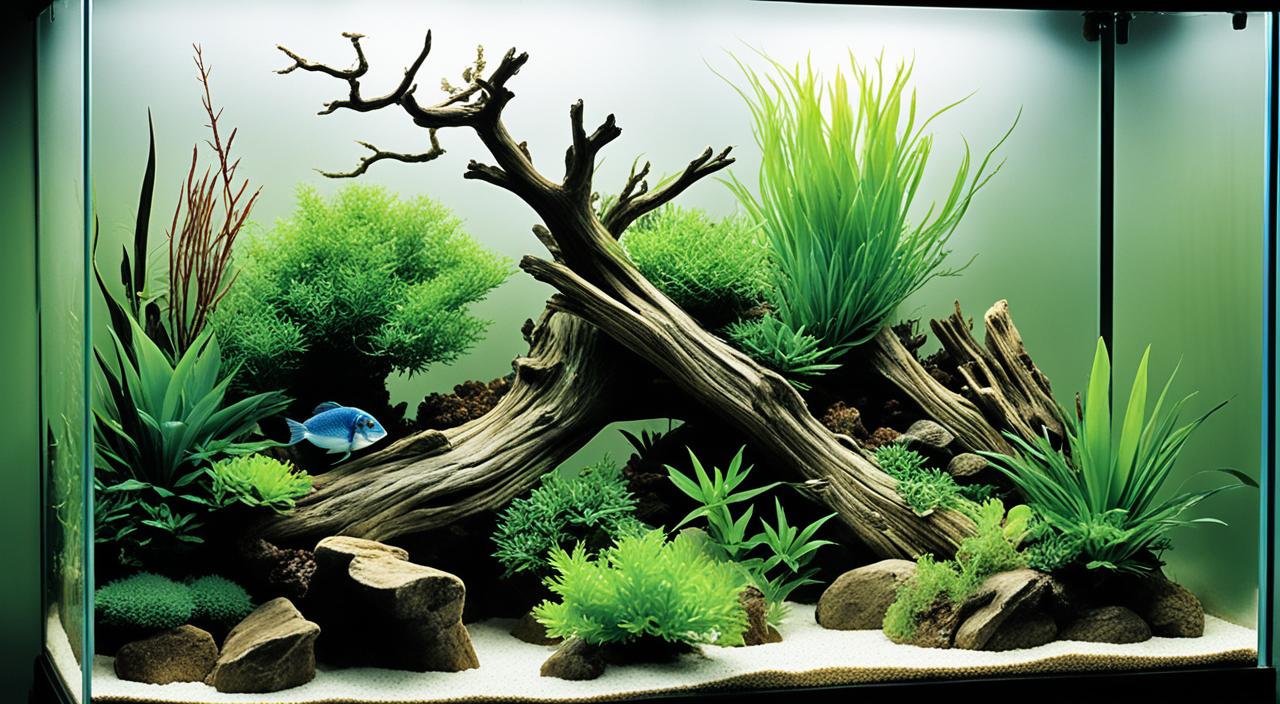Aquarium cycling is crucial in establishing a healthy and balanced aquatic environment for fish. It involves the development of beneficial bacteria that convert harmful ammonia into nitrite and then nitrate, completing the nitrogen cycle. Understanding the duration of aquarium cycling is essential for successfully setting up a new tank and ensuring the well-being of your fish. In this comprehensive guide, we will explore the different aspects of aquarium cycling duration, including the nitrogen cycle, optimal conditions for efficient cycling, preparation before starting the process, methods of aquarium cycling, the role of test kits, common missteps to avoid, acclimating fish to a newly cycled tank, and maintaining aquarium health after cycling.
Key Takeaways:
- Aquarium cycling is the process of establishing beneficial bacteria that convert harmful ammonia into nitrite and then nitrate.
- The duration of aquarium cycling can vary but generally takes four to eight weeks.
- Factors such as tank size, water temperature and pH, the presence of live plants, filtration efficiency, and the quality of beneficial bacteria can affect the duration of cycling.
- Proper preparation, including cleaning the aquarium, choosing an appropriate substrate, and ensuring adequate filtration, is crucial before cycling.
- Fishless cycling is a humane method that involves adding a source of ammonia and measuring ammonia, nitrite, and nitrate levels using test kits.
Demystifying the Nitrogen Cycle in Home Aquaria
The nitrogen cycle is a fundamental process in aquarium cycling. It is critical to establish a stable and healthy aquatic environment for your fish. By understanding the stages of the nitrogen cycle and the importance of beneficial bacteria, you can create an environment that promotes the well-being of your fish.
What is the Nitrogen Cycle?
The nitrogen cycle is when toxic ammonia, produced by fish waste and uneaten food, is converted into nitrite and nitrate. This cycle is essential in maintaining water quality and preventing harmful ammonia buildup. The nitrogen cycle consists of three main stages:
- Ammonia: The first stage of the nitrogen cycle is the conversion of ammonia. Ammonia is highly toxic to fish and can cause stress and even death. Beneficial bacteria, specifically nitrifying bacteria, break down ammonia into nitrite.
- Nitrite: The second stage of the nitrogen cycle is the conversion of nitrite. While nitrite is less toxic than ammonia, it can still be harmful to fish. Different strains of nitrifying bacteria convert nitrite into nitrate, which is less harmful to fish but still needs to be controlled.
- Nitrate: The final stage of the nitrogen cycle is the conversion of nitrate. Nitrate is the least toxic form of nitrogen and can be safely tolerated by most fish. However, high nitrate levels can still harm fish health and lead to poor water quality and algae growth if not managed properly.
The Critical Role of Beneficial Bacteria
Beneficial bacteria are a key component of the nitrogen cycle. These bacteria colonize in the biological filters and other surfaces of an aquarium, breaking down ammonia and converting it into less harmful compounds. The growth and activity of beneficial bacteria are crucial in maintaining a balanced microbial ecosystem that efficiently removes ammonia and maintains water quality.
The image above illustrates the nitrogen cycle in home aquaria, highlighting the importance of beneficial bacteria in converting harmful ammonia to nitrite and then nitrate.
By understanding the nitrogen cycle and the critical role of beneficial bacteria, you can ensure a healthy and thriving aquarium environment for your fish. In the next section, we will explore the factors that can influence the duration of the aquarium cycling process, helping you set realistic expectations for your setup.
Aquarium Cycling Duration: Setting Expectations
When it comes to aquarium cycling duration, it is essential to set realistic expectations. Aquariums generally take four to eight weeks to cycle, but the actual duration can vary depending on various factors. These factors include the size of the tank, water temperature and pH, the presence of live plants, the efficiency of the filtration system, and the quality of beneficial bacteria. By understanding these factors and setting reasonable expectations, you can ensure a successful and efficient cycling process.
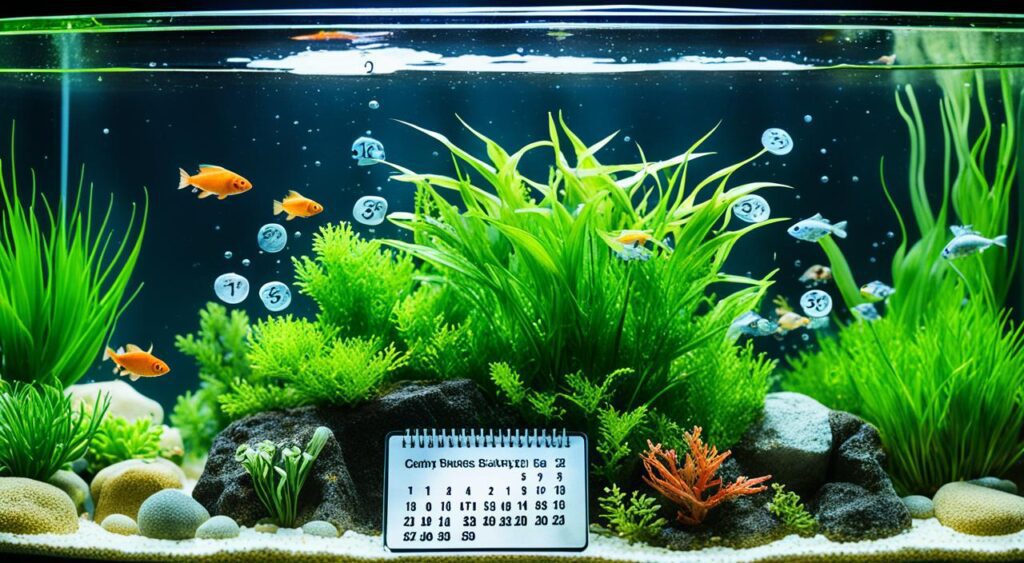
Optimal Conditions for Efficient Aquarium Cycling
Achieving optimal conditions is crucial for efficient aquarium cycling. By creating an environment that supports the growth of beneficial bacteria, you can speed up the cycling process and ensure the health and well-being of your fish. Several factors contribute to the optimal conditions for aquarium cycling, including water temperature, pH levels, aquarium size, filter capacity, and the presence of live plants.
The Impact of Water Temperature and pH
Water temperature plays a significant role in the activity of beneficial bacteria during aquarium cycling. The ideal water temperature for efficient cycling generally falls within the range of 75°F to 82°F (24°C to 28°C). This temperature range promotes the growth and reproduction of beneficial bacteria, allowing them to process ammonia and nitrite efficiently.
Similarly, maintaining the correct pH range is crucial for the activity of beneficial bacteria. The optimal pH for aquarium cycling typically ranges from 6.5 to 7.5. Within this range, the beneficial bacteria can thrive and convert ammonia into less harmful compounds.
Importance of Aquarium Size and Filter Capacity
The size of your aquarium plays a vital role in the cycling process. A larger aquarium provides more surface area for beneficial bacteria to colonize, allowing for a larger population of bacteria that can efficiently convert ammonia and nitrite. Therefore, a larger tank generally results in a faster cycling process.
In addition to aquarium size, the filter capacity is equally important. A properly sized and efficient filtration system ensures the removal of toxins such as ammonia and nitrite from the water. A high-quality filter with adequate biological filtration capacity is essential for hosting a thriving colony of beneficial bacteria and maintaining water quality throughout the cycling process.
Adding Plants: Can They Help Cycle Faster?
Live plants in your aquarium can significantly contribute to a faster cycling process. They provide additional biological filtration by absorbing ammonia and nitrate, effectively reducing the levels of these compounds in the water. Furthermore, live plants release oxygen during photosynthesis, creating a healthier environment for beneficial bacteria.
Adding live plants not only accelerates the cycling process but also helps establish a balanced ecosystem within the aquarium. The plants compete with algae for nutrients, preventing excessive algae growth, and promoting a more stable and visually appealing aquatic environment.
| Factors | Optimal Range |
|---|---|
| Water Temperature | 75°F to 82°F (24°C to 28°C) |
| pH | 6.5 to 7.5 |
| Aquarium Size | Larger size for more beneficial bacteria colonization |
| Filter Capacity | Adequate biological filtration for toxin removal |
| Live Plants | Additional biological filtration and nutrient absorption |
Preparation Before Starting the Cycling Process
Before embarking on the aquarium cycling process, it is crucial to make proper preparations. This involves cleaning the aquarium, selecting the right substrate, and ensuring adequate filtration.
Cleaning the Aquarium: Start by thoroughly cleaning the aquarium and its components. Remove any debris or contaminants that could hinder the cycling process. This includes cleaning the tank walls, gravel, decorations, and filtration system. Avoid using any harsh chemicals or detergents that could harm the fish or disrupt the natural balance of the aquarium.
Choosing the Appropriate Substrate: Selecting the right substrate plays a significant role in creating an environment conducive to beneficial bacteria growth. Gravel or sand are popular choices for aquarium substrate. They provide surface area for bacteria colonization and create a suitable habitat for the nitrogen cycle to occur. Ensure that the chosen substrate is clean and free from any contaminants before adding it to the tank.
Adding Adequate Filtration: Adequate filtration is essential for maintaining water quality during the cycling process. Choose a filtration system that matches the size of your tank and provides efficient mechanical and biological filtration. Proper filtration helps remove excess food, waste, and toxins, ensuring a healthy and balanced aquatic environment for your fish.
By taking these preparation steps, you can create a clean and suitable environment for the aquarium cycling process. This sets the foundation for a successful and efficient cycling period, benefiting the long-term health and well-being of your fish.
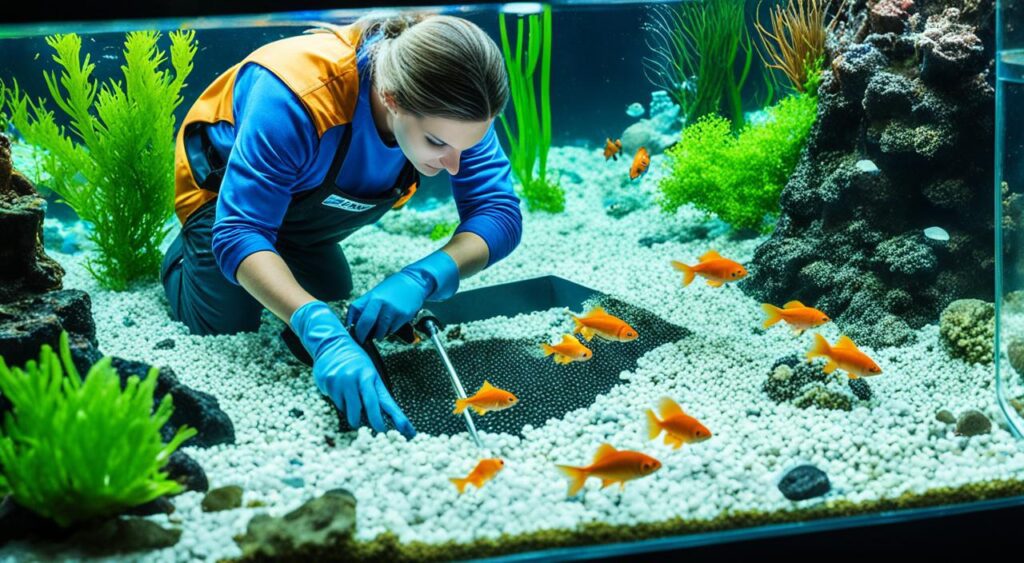
The Fishless Cycling Method: A Humane Approach
The fishless cycling method is a humane and responsible approach to establishing the nitrogen cycle in an aquarium without subjecting fish to potentially harmful levels of ammonia and nitrite. By following this method, you can ensure the well-being of your fish while still achieving a fully cycled tank.
How to Cycle Without Fish: Step by Step
To begin the fishless cycling process, you will need to add a source of ammonia to the aquarium. This can be done using pure ammonia or by adding small amounts of fish food. The ammonia serves as a food source for the beneficial bacteria responsible for breaking down harmful substances in the tank.
Here is a step-by-step guide for fishless cycling:
- Add a source of ammonia to the aquarium, such as pure ammonia or fish food.
- Monitor the ammonia levels using an aquarium test kit.
- As the ammonia levels rise, beneficial bacteria will begin to establish and convert ammonia into nitrite.
- Continue monitoring the nitrite levels using an aquarium test kit.
- Once the nitrite levels begin to rise, it indicates that the second group of beneficial bacteria is actively converting nitrite into nitrate.
- Monitor the nitrate levels using an aquarium test kit.
- Once both ammonia and nitrite levels reach zero and nitrate levels are present, it indicates that the tank has completed the cycling process and is stable.
Measuring Ammonia, Nitrite, and Nitrate Levels
During the fishless cycling process, it is crucial to regularly measure ammonia, nitrite, and nitrate levels using aquarium test kits. These kits allow you to monitor the progress of the nitrogen cycle and ensure that the tank is properly cycling.
When measuring ammonia levels, a reading of 0 ppm indicates that the beneficial bacteria have fully established and converted ammonia into nitrite. For nitrite levels, a reading of 0 ppm signifies that the second group of beneficial bacteria has effectively converted nitrite into nitrate. Finally, a reading of 0 ppm for both ammonia and nitrite, along with the presence of nitrate, indicates a successfully cycled tank.
It is important to note that the duration of the fishless cycling method may vary depending on several factors, including the efficiency of the beneficial bacteria establishment, water parameters, and temperature. Regular testing and monitoring of ammonia, nitrite, and nitrate levels will provide valuable insights into the progress and completion of the cycling process.
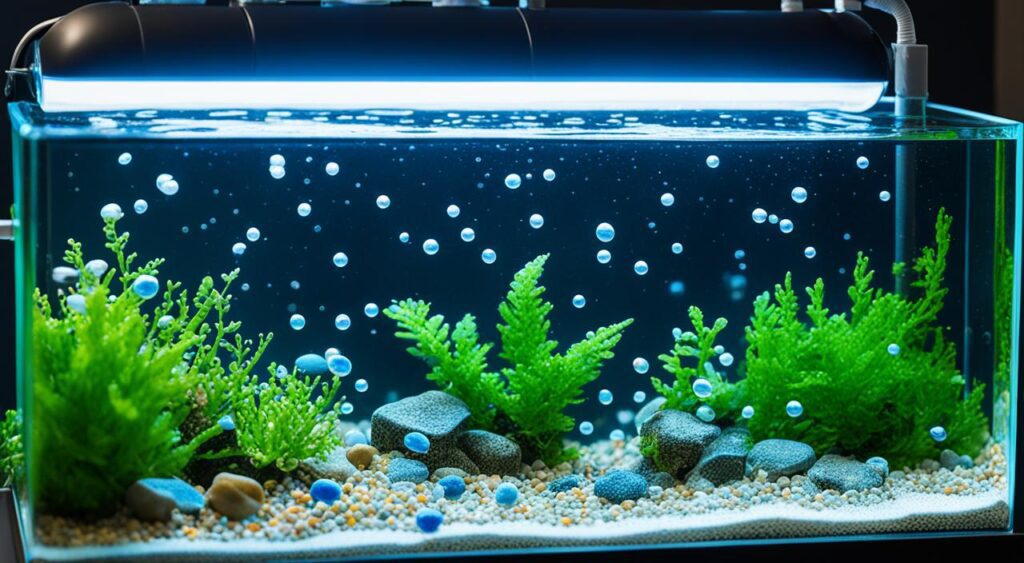
| Water Parameters | Ammonia Levels | Nitrite Levels | Nitrate Levels |
|---|---|---|---|
| Initial | 0 ppm | 0 ppm | 0 ppm |
| Establishing Beneficial Bacteria | Rising | 0 ppm | 0 ppm |
| Conversion of Ammonia to Nitrite | 0 ppm | Rising | 0 ppm |
| Conversion of Nitrite to Nitrate | 0 ppm | 0 ppm | Rising |
| Completed Cycling Process | 0 ppm | 0 ppm | Present |
Cycling with Fish: Understanding the Risks
While fishless cycling is recommended for ensuring the well-being of fish, some aquarists choose to cycle their aquariums with fish. However, cycling with fish poses certain risks and can potentially harm the fish if not done properly. It is important to be aware of these risks and take necessary precautions to minimize any potential harm to the fish during the aquarium cycling process.
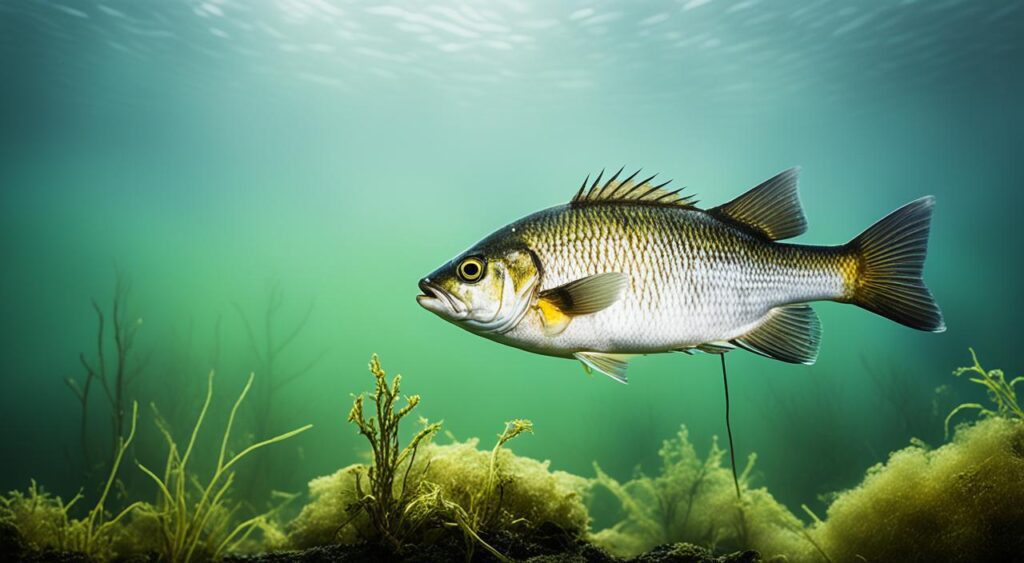
One of the main risks of cycling with fish is exposing them to high levels of ammonia and nitrite, which are toxic to fish. During the cycling process, these toxic compounds can accumulate in the water, leading to stress, illness, and even death in fish. Additionally, rapid fluctuations in water parameters, such as pH and temperature, can further stress the fish and compromise their health.
It is important to note that fish-in cycling should only be considered if you have a solid understanding of the nitrogen cycle, water quality management, and fish care. Proper monitoring of water parameters and regular water testing are crucial to ensure that toxic levels of ammonia and nitrite are kept in check. It is also essential to choose hardy fish species that can tolerate the cycling process and the potential fluctuations in water conditions.
If you decide to cycle your aquarium with fish, it is highly recommended to use a combination of fish and beneficial bacteria additives to help establish a healthy bacterial colony and maintain water quality. These additives can help reduce the risks associated with fish-in cycling and provide a safer environment for the fish during the cycling process.
Ultimately, it is crucial to prioritize the well-being of the fish when cycling an aquarium. Considering the risks involved, fishless cycling is generally considered the safer and more humane approach. However, if you choose to cycle with fish, it is important to educate yourself, take necessary precautions, and closely monitor the water parameters to ensure the health and safety of your fish.
The Role of Aquarium Test Kits During Cycling
Regularly testing water parameters is a vital part of the aquarium cycling process. By using aquarium test kits, you can monitor the levels of ammonia, nitrite, and nitrate in the water, which provides valuable insights into the progress of the nitrogen cycle. Test kits allow you to maintain optimal water conditions and ensure the health and well-being of your fish.
How to Properly Test Water Parameters
Testing water parameters is a straightforward process that requires the following steps:
- Collect a water sample: Use a clean container to collect a small sample of water from your aquarium.
- Prep the test kit: Follow the instructions provided with your test kit to prepare the necessary reagents and testing equipment.
- Perform the test: Add the reagents to the water sample according to the test kit instructions. Typically, this involves adding a specific number of drops or tablets and shaking the container to mix the contents.
- Observe and record the results: Allow the test solution to react with the water sample for the recommended duration. The color change or other indicators will provide a measurement of the parameter being tested. Compare the results to the color chart or numerical values provided with the test kit, and record the readings.
By following these steps accurately and consistently, you can obtain reliable and precise measurements of ammonia, nitrite, and nitrate levels in your aquarium water.
Interpreting Ammonia, Nitrite, and Nitrate Test Results
Understanding and interpreting the results obtained from your test kit is crucial for maintaining a healthy aquarium environment. Here’s how to interpret the test results for ammonia, nitrite, and nitrate:
| Parameter | Ideal Range | Safe Level | Danger Level |
|---|---|---|---|
| Ammonia | 0 ppm | 0 – 0.25 ppm | Above 0.25 ppm |
| Nitrite | 0 ppm | 0 – 0.25 ppm | Above 0.25 ppm |
| Nitrate | 0 – 20 ppm | 0 – 40 ppm | Above 40 ppm |
Ammonia and nitrite levels should ideally be maintained at 0 ppm, as any detectable levels can be harmful to fish. Nitrate levels, on the other hand, should be kept below 20 ppm for most freshwater fish. Higher nitrate levels can indicate inadequate filtration or excessive waste accumulation, which can lead to poor water quality.
Regularly testing water parameters and interpreting the results will enable you to identify any issues and take the necessary steps to maintain a healthy and balanced aquarium environment.
Common Missteps When Cycling Your Aquarium
When it comes to aquarium cycling, even experienced aquarists can make some common missteps that can prolong the process or harm the health of their fish. By understanding these pitfalls and errors, you can take the necessary steps to avoid them and ensure a smoother cycling experience.
One of the most common mistakes in aquarium cycling is adding too many fish too soon. While it may be tempting to populate your tank with a variety of colorful fish, introducing too many fish before the beneficial bacteria have had a chance to establish can lead to a spike in ammonia and nitrite levels, jeopardizing the health of your fish. It’s important to be patient and allow the cycling process to complete before adding a full fish load to your tank.
Another common misstep is overfeeding your fish during the cycling process. Overfeeding leads to excess waste production, which can overload the beneficial bacteria’s ability to process ammonia effectively. It’s important to feed your fish sparingly and remove any uneaten food promptly to prevent water contamination.
Using old or contaminated water when setting up your aquarium can also hinder the cycling process. Tap water may contain chlorine or chloramines, which can harm the beneficial bacteria, while contaminated water from an existing tank can introduce unwanted substances that disrupt the cycling process. Always use fresh, conditioned water when filling your tank to ensure the health of the beneficial bacteria.
Attempting to cycle your aquarium with fish can also lead to problems. Cycling with fish can subject them to toxic levels of ammonia and nitrite, causing stress and illness. It’s best to choose fishless cycling methods, such as using ammonia or fish food as a source of ammonia, to establish the nitrogen cycle without harming your fish.
Lastly, neglecting to monitor water parameters during the cycling process can be a costly mistake. Regularly testing ammonia, nitrite, and nitrate levels is crucial for understanding the progress of the cycling process and making necessary adjustments. By monitoring these parameters, you can address any imbalances promptly and ensure a successful cycling outcome.
By avoiding these common missteps and pitfalls, you can streamline the aquarium cycling process and create a healthy, thriving environment for your fish. Remember to be patient, attentive, and proactive in maintaining the well-being of your aquatic companions.
Post-Cycling: Acclimating Fish to a Newly Cycled Tank
Once the aquarium has completed the cycling process, it is important to acclimate fish to their new environment properly. This involves introducing fish gradually to the newly cycled tank and carefully monitoring their behavior and health.
Introducing Fish Gradually
When introducing fish to a newly cycled tank, it is crucial to do so gradually. Abrupt changes in water chemistry or temperature can cause stress and potentially harm the fish. Start by floating the fish in a bag or container on the surface of the aquarium, allowing them to adjust to the water temperature. After about 15-20 minutes, gently release the fish into the tank.
It is recommended to introduce only a few fish at a time, depending on the size of the tank and the species of fish. Overcrowding the tank can lead to poor water quality and increased stress levels for the fish.
Watching for Signs of Stress in New Arrivals
After introducing the fish to the newly cycled tank, it is vital to closely monitor their behavior and health. Stress in fish can manifest in various ways, and it is essential to recognize these signs early on to address any issues promptly. Some common signs of stress in new fish include:
- Increased or decreased activity levels
- Loss of appetite
- Erratic swimming patterns
- Fading or dull colors
- Gasping for air at the water surface
If you observe any of these signs, it is crucial to take immediate action to reduce stress levels in the fish. This may involve adjusting water parameters, ensuring adequate hiding spaces, or consulting with a knowledgeable aquarist or veterinarian.
By acclimating fish gradually and closely monitoring their behavior and health, you can help ensure a smooth transition to the newly cycled tank and promote the well-being of your aquatic pets.
Understanding the Duration of Fishless Cycling
Fishless cycling duration is an important aspect to consider when setting up a new aquarium. The timeline for fish tank fishless cycling can vary depending on several factors. By understanding these factors, you can estimate the time it may take to establish a fully cycled tank.
Factors influencing fishless cycling duration:
- Aquarium size: The size of your aquarium can impact the duration of fishless cycling. Larger tanks may require more time for beneficial bacteria to establish a sufficient colony.
- Water temperature and pH: Optimal water temperature and pH levels provide an ideal environment for the growth and activity of beneficial bacteria, which can expedite the cycling process.
- Quality of beneficial bacteria: The efficiency and quality of the beneficial bacteria colony in your aquarium’s biological filter can influence the speed of fishless cycling. Ensuring a healthy and balanced microbial ecosystem is crucial.
- Additives and supplements: The use of additives or supplements designed to promote the growth of beneficial bacteria can potentially shorten the duration of fishless cycling.
It’s important to note that fishless cycling typically takes several weeks to complete, ranging from four to eight weeks. However, the actual duration can vary based on the specific conditions of your aquarium and the factors mentioned above.
Maintaining Aquarium Health After Cycling
Now that the cycling process is complete, it’s crucial to prioritize the maintenance of your aquarium to ensure the ongoing health and wellbeing of your fish. Regular monitoring of water parameters, performing routine water changes, and ensuring the long-term stability of the nitrogen cycle are essential steps in maintaining a balanced and thriving aquatic environment.
Regular Monitoring and Water Changes
I recommend regularly monitoring the important water parameters in your aquarium, such as ammonia, nitrite, nitrate levels, and pH. This can be done using test kits specifically designed for these parameters. By monitoring these levels, you can catch any fluctuations or imbalances early on and take necessary action to rectify them. Regular water changes, typically 10-15% of the total tank volume every 2 weeks, can help maintain optimal water quality by diluting any accumulated toxins and replenishing essential minerals.
In addition to testing for ammonia, nitrite, nitrate, and pH, it’s also important to regularly check the temperature of your aquarium water, as temperature fluctuations can negatively impact the health of your fish. Invest in a reliable aquarium thermometer and ensure that the temperature remains stable within the ideal range for your specific species of fish.
Ensuring Long-Term Stability of the Nitrogen Cycle
Maintaining the long-term stability of the nitrogen cycle is crucial for the ongoing health of your aquarium. To ensure that the beneficial bacteria responsible for the nitrogen cycle continue to thrive, avoid sudden changes in water parameters, such as pH and temperature. Sudden changes can disrupt the balance of the bacterial colonies and lead to a spike in ammonia or nitrite levels. If you need to make adjustments to water parameters, do so gradually over time, allowing the beneficial bacteria to adapt.
Another important aspect of maintaining the nitrogen cycle is avoiding overfeeding your fish. Excess food can result in an accumulation of organic waste, leading to increased ammonia and nitrite levels. Feed your fish only the amount they can consume within a few minutes, and remove any uneaten food from the tank to prevent degradation and water pollution.
By following these guidelines for maintaining aquarium health after cycling, you can ensure a stable and thriving aquatic environment for your fish. Regular monitoring, routine water changes, and the long-term stability of the nitrogen cycle are key factors in promoting the health and longevity of your fish, allowing you to enjoy your aquarium for years to come.
FAQ
What is the nitrogen cycle?
The nitrogen cycle is a fundamental process in aquarium cycling. It involves the conversion of toxic ammonia produced by fish waste into nitrite and then nitrate by beneficial bacteria.
What is the role of beneficial bacteria in aquarium cycling?
Beneficial bacteria play a critical role in the nitrogen cycle by breaking down ammonia and converting it into less harmful compounds. These bacteria colonize the aquarium’s biological filters and other surfaces, ensuring the efficient removal of ammonia and promoting the growth of a balanced microbial ecosystem.
How long does aquarium cycling take?
The duration of aquarium cycling can vary, but it generally takes four to eight weeks. Factors such as tank size, water temperature and pH, presence of live plants, filtration system efficiency, and beneficial bacteria quality can influence the duration.
What are the optimal conditions for efficient aquarium cycling?
Maintaining appropriate water temperature and pH levels is crucial for promoting the growth and activity of beneficial bacteria. The size of the aquarium and the capacity of the filtration system also play important roles. Adding live plants can potentially accelerate the cycling process by providing additional biological filtration and nutrient absorption.
What preparations should be done before starting the cycling process?
It is important to clean the aquarium and its components, choose an appropriate substrate, and ensure adequate filtration. Cleaning removes debris and contaminants, while the substrate provides a suitable environment for beneficial bacteria. The filtration system should match the tank size and provide efficient mechanical and biological filtration.
What is the fishless cycling method?
The fishless cycling method is a humane approach to establish the nitrogen cycle without subjecting fish to harmful levels of ammonia and nitrite. It involves adding a source of ammonia, such as pure ammonia or fish food, and measuring ammonia, nitrite, and nitrate levels using test kits.
What are the risks of cycling with fish?
Cycling with fish can potentially harm the fish if not done properly. The process exposes them to high levels of ammonia and nitrite, which can be toxic. It is recommended to use the fishless cycling method to ensure the well-being of the fish.
How do you test water parameters during the cycling process?
Test kits are used to monitor ammonia, nitrite, and nitrate levels. These kits provide valuable insights into the progress of the cycling process and help ensure the establishment of a healthy nitrogen cycle.
What are common missteps to avoid during aquarium cycling?
Common missteps include neglecting water parameter testing, overfeeding fish, adding fish too soon, and not providing adequate biological filtration. These mistakes can hinder the cycling process and harm the fish.
How do you acclimate fish to a newly cycled tank?
It is important to introduce fish gradually to the newly cycled tank. This involves floating the fish in the tank to equalize temperature, gradually adding small amounts of tank water to their transport container, and monitoring their behavior and health closely.
How long does fishless cycling typically take?
The duration of fishless cycling can vary depending on factors such as tank size, water temperature and pH, and the efficiency of the cycling method. It can take anywhere from a few weeks to a few months to establish a fully cycled tank.
How do you maintain aquarium health after cycling?
Maintaining aquarium health involves regularly monitoring water parameters, performing routine water changes, and ensuring the long-term stability of the nitrogen cycle. These practices help keep the aquarium balanced and promote the well-being of the fish.

